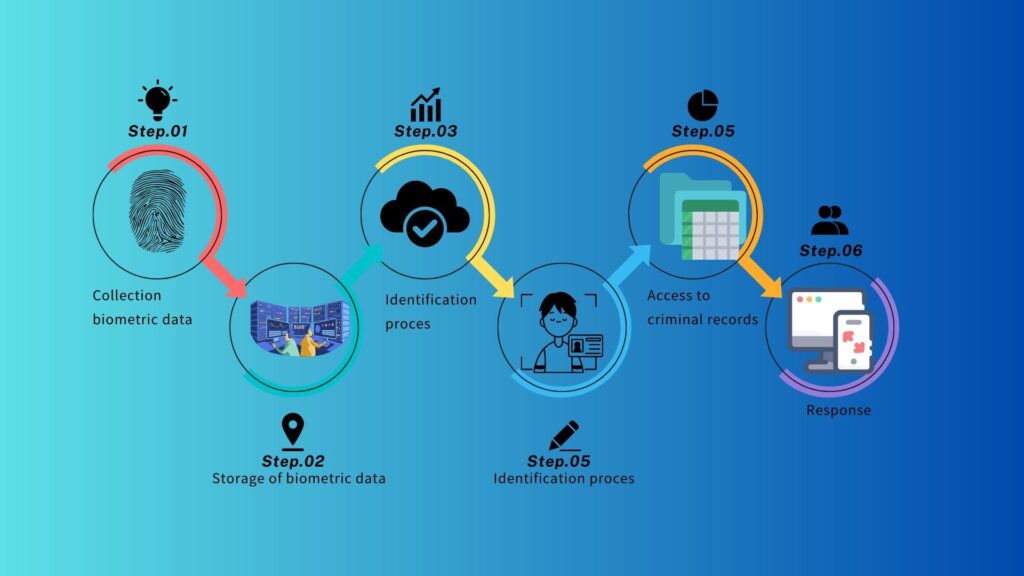A Biometric Police Enforcement System is a technology-based law enforcement system that utilizes biometric identification methods to assist police officers in identifying and tracking individuals who may be involved in criminal activities.
The system uses biometric data such as fingerprints, facial recognition, iris scans, and DNA analysis to identify individuals and match them with criminal records or other databases. This technology can be used for various purposes, including identifying suspects, locating missing persons, and monitoring individuals on probation or parole.
の 生体認証警察取締システム can be implemented in various ways, such as through mobile devices or cameras installed in public places. The system allows police officers to quickly and accurately identify individuals without the need for physical documents or identification cards.
However, there are concerns regarding the use of biometric data and potential violations of privacy. Some individuals argue that the use of biometric data by law enforcement may lead to false accusations and profiling of innocent individuals. Therefore, it is essential to ensure that these systems are implemented with appropriate safeguards and regulations to protect individual privacy and prevent misuse.
Police law enforcement operational management biometric system refers to the use of biometric technology in law enforcement operations, management, and administration. The system enables law enforcement agencies to use biometric data, such as fingerprints, facial recognition, iris scans, and DNA analysis, to identify individuals and match them with criminal records or other databases.

This technology can be used for various purposes, including identifying suspects, locating missing persons, and monitoring individuals on probation or parole. The use of biometric technology in law enforcement operations can help enhance the efficiency and effectiveness of police work, as it enables police officers to quickly and accurately identify individuals without the need for physical documents or identification cards.
In addition to operational use, biometric technology can also be used for management and administration purposes, such as tracking and monitoring police officers’ attendance and work hours. This can help ensure that officers are working as expected and can help improve overall police department performance.
However, the use of biometric technology in law enforcement operations also raises concerns about privacy and civil liberties. It is essential to implement appropriate safeguards and regulations to protect individual privacy and prevent misuse of the technology. Additionally, law enforcement agencies must ensure that their biometric systems are secure and protected from unauthorized access and hacking.
use Biometric Police Enforcement System benefits
The use of a Biometric Police Enforcement System can offer several benefits to law enforcement agencies, including:
- Enhanced accuracy and efficiency: Biometric technology can quickly and accurately identify individuals, enabling police officers to identify suspects or find missing persons faster and with higher accuracy. This can help reduce the time and resources needed for investigations, leading to more efficient law enforcement operations.
- Improved public safety: The use of biometric technology can help prevent crime and improve public safety by enabling police officers to quickly identify and apprehend suspects. Additionally, the technology can be used to monitor individuals on probation or parole, which can help prevent reoffending and enhance community safety.
- Cost-effective: The use of a Biometric Police Enforcement System can be cost-effective in the long term by reducing the need for physical documents and identification cards, and reducing the time and resources required for investigations.
- Streamlined processes: Biometric technology can simplify and streamline law enforcement processes, making it easier for police officers to access and manage information. This can help improve departmental efficiency and reduce errors.
- Enhanced officer safety: The use of biometric technology can help enhance officer safety by providing officers with real-time identification information about individuals they encounter during their work.
However, it is essential to ensure that biometric systems are implemented with appropriate safeguards and regulations to protect individual privacy and prevent misuse. Additionally, it is important to provide proper training to law enforcement officers on how to use biometric technology and interpret the results accurately.
how biometric Police Enforcement System work
A biometric Police Enforcement System works by using biometric data to identify individuals and match them with criminal records or other databases. The system typically involves the following steps:
- Collection of biometric data: Biometric data such as fingerprints, facial recognition, iris scans, and DNA analysis are collected from individuals.
- Storage of biometric data: The collected biometric data is stored in a database for future use.
- Identification process: When an individual is encountered, their biometric data is compared to the data stored in the database to determine if there is a match.
- Verification process: If there is a match, the system verifies the identity of the individual by comparing their biometric data to the data stored in the database.
- Access to criminal records: If the individual is identified as a suspect or a person of interest, the system can provide police officers with access to criminal records and other relevant information.
- Response: Based on the results of the identification and verification processes, police officers can take appropriate action, such as arresting a suspect or locating a missing person.

It is important to note that the accuracy of the biometric Police Enforcement System depends on the quality of the collected biometric data and the accuracy of the comparison algorithms used by the system. Additionally, it is essential to implement appropriate safeguards and regulations to protect individual privacy and prevent misuse of the technology.
use biometric police enforcement system conuntry
Several countries around the world use biometric police enforcement systems to enhance their law enforcement operations. Here are a few examples:
United States:
The Federal Bureau of Investigation (FBI) has implemented the Integrated Automated Fingerprint Identification System (IAFIS), which is a biometric identification system that stores fingerprint, palm print, and criminal history records.
United Kingdom:
The Metropolitan Police Service has implemented a facial recognition system, which uses live CCTV footage to identify suspects in real-time.
India:
The Unique Identification Authority of India has implemented the Aadhaar program, which is a biometric identification system that collects iris scans, fingerprints, and photographs of Indian citizens.
China:
The Chinese government has implemented a facial recognition system to identify and monitor individuals, including suspected criminals and Uighur Muslims.
Singapore:
The Singapore Police Force has implemented a biometric identification system that collects fingerprints and facial recognition data to identify and track suspects.
It is worth noting that the use of biometric police enforcement systems has been subject to controversy and debate, particularly around issues of privacy and civil liberties. Some critics argue that these systems can be used for mass surveillance and may infringe on individual rights, while proponents argue that they can enhance public safety and help prevent crime.



